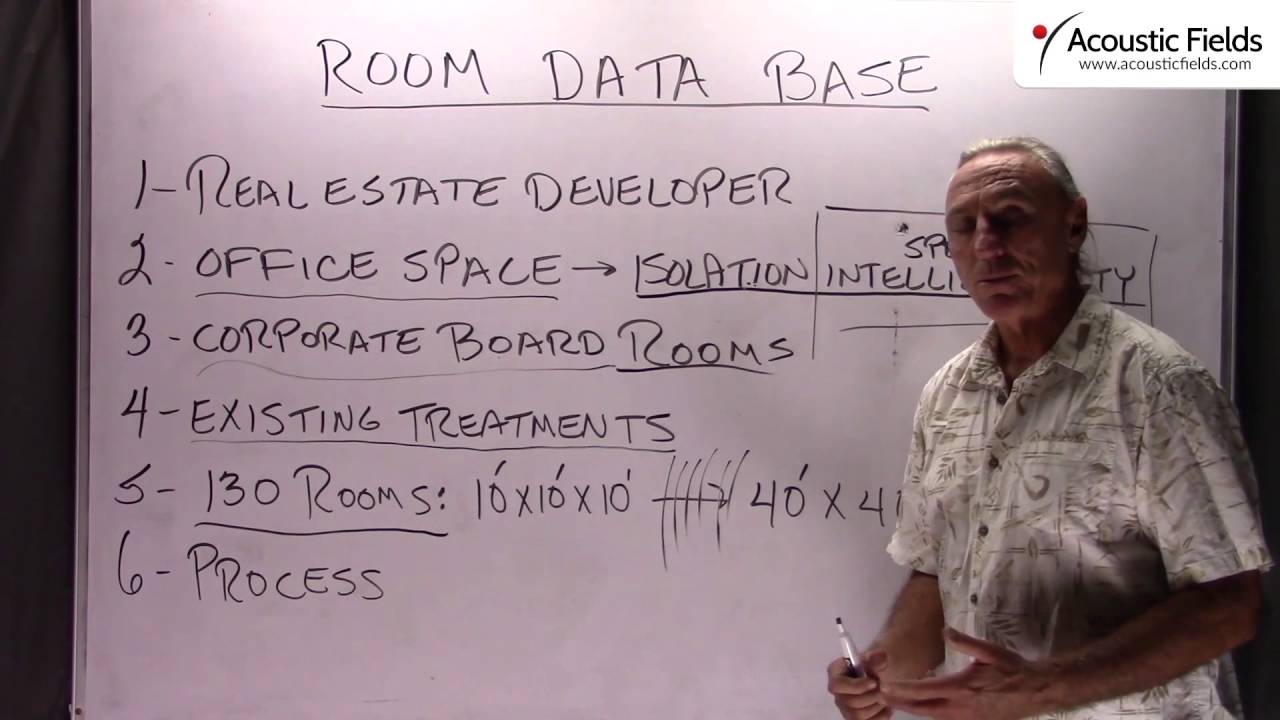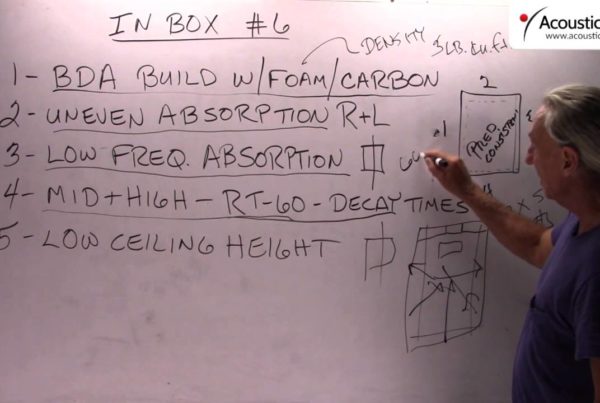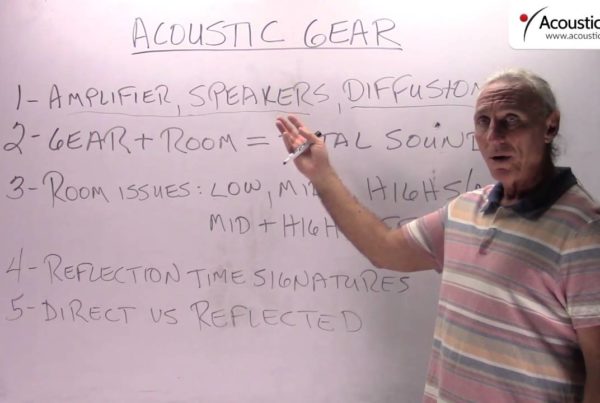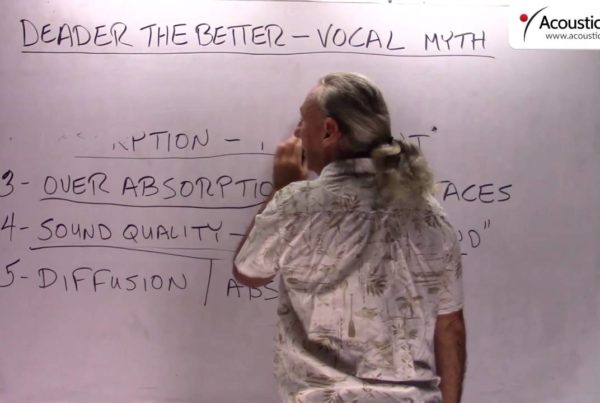Today we’re going to talk about our database because this is really the lifeblood and the core of our business and probably the most important set of data that you could rely upon too as a client or customer.
So how did I get started? I was a real estate developer back in the 80’s and 90’s, was partners with 3 other people and we built over a billion dollars in real estate in the Phoenix area. Everything from shopping centers, office buildings to 16-story high-rise buildings. So we were a very successful, very big company. 450 people at that time.
So one of the things that we focused on in that process was office space because that was a very popular commodity in that area at that time. Phoenix was booming and companies were moving there. A lot of benefits to living in the Phoenix and working in the Phoenix area for these corporations which I can’t remember at all right now what they were but nonetheless they were at that time.
So we had a lot offices and we had isolation and of course speech intelligibility issues when you deal with office and corporate boardroom. So the goal was to make them as quiet as we could and get the speech intelligibility so people could hear what was going on equally as well, too.
So mainly dominated by males at that time – hopefully it’s changed a little bit more but most of these corporations, I can name some of them, Shell Oil, Social Security was even involved with us. And we have some big, big companies with probably big, big secrets and they don’t want people knowing about it so isolation was a real important thing. And obviously we charged a premium for these.
So it was worth our budget, it was worth our marketing program and projections to put money into isolation and speech intelligibility. Because we charged a premium for that, up to 25% more and people rented our rooms because they were quiet and because they could hear everything. I mean that’s what we were known for at that time.
So I said “Alright, so we’ve got a budget, I got 8 guys and a couple million dollars” and I went into it. I bought 3 homes and the first home was the test facility and the homes on the end were 4 guys for one and 4 guys in the other and in the morning I’d go through to wake them up with garbage cans and coffee and donuts because you know, getting the carpenter guys to get up in the morning is the first battle but once they get going they’re usually pretty good but you’ve got to get them going because they’ve got to build things and do manual labor and get a little bit coffee, a little bit of sugar and the donuts and we’re good to go.
So what do we do in that middle house? Well, the middle house was about 3,500 square feet, two story so we had a big open area that we could subdivide and do all this – unknown by the way to the homeowners association, that’s why I had to put them both in the houses so we all lived there. Because you’re really not supposed to tear the inside of those houses out but not a big fan of rules sometimes.
So the bottom line here is we had to work with the existing treatments that were on the marketplace, the existing foams, the existing isolation technology, the existing speech intelligibility stuff. I think companies at that time were all like Sonax, companies like that so of course isolation was that double wall, drywall thing that we hear so much about and such a waste of space and materials to achieve not really great values when you know other methods.
So the bottom line here is the existing treatments I tried didn’t work. Maybe they worked enough for their usages in the marketplace for other people but they did not work for us. Because our clients were not going to have any noise and our clients wanted to hear a whisper. So all that had to be calculated in.
So my partners and I agreed because I had the acoustic background that I would pursue this and that’s what we did. And that’s how we came up with our diaphragmatic absorption, that’s how we came up with our foam technology. Neither one are accidents.
The diaphragmatic absorption technology came about from a database of over a 130 rooms that we built, with the smallest 10 x 10 x 10 and the largest 40 x 40 x 40 and a 128 rooms in between. So our diaphragmatic absorption, the rates and levels came about when we analyzed all these rooms, we started seeing problems from 30 to 50, large problems. And problems from 30 to 200, average problems. That’s the reason for the ACDA-12 and this is the reason for the ACDA-10. Both products development research and development are data-driven from a base of a 130 rooms. Statistically significant, trust me.
So when I started looking at the data I saw 30 to 50 in all the rooms. I saw 30 to 200 in about 90. So that was the impetus behind the response curves that you have with the ACDA-10 and ACDA-12. Foam the same way. The foam response curves were a 100 to about 1,500-2,000 for female so we had to look at the rate and levels of absorption there.
And the current materials on the marketplace they didn’t contribute to speech intelligibility. They contribute to absorption and slow on the reflection down altering the time signature but not intelligibility, there’s a difference between time signature and intelligibility. Those are completely different things. Definition and time are different.
So you have to use the curve to get the definition. So you have to change the curve to improve or increase the definition, that’s what I did. Took me 8 years and I hope never ever have to go through that mess again. Chasing a dragon for 8 years. So the foams we have and we have 4 thicknesses so hopefully there is something in there for you. If there’s not, well, good luck. Because I’m not going back to R&D on the foam. So but the curves are good. The curves are good for the foam and our ACDA-12s and ACDA-10 technology is legendary. So I don’t even need to go into that.
So let me tell you a little bit about the process because that was kind of fun. Back in the 80’s and 90’s we didn’t have the speed of the processing power you guys have today. So I used 18 microphones space throughout the room. Then of course everything into an interface, okay? And then into the computer.
So we would test and of course we had our source – we would test for RT-60, we would test for pressure, response curves and then the computer would record the data. And then we would go ahead and get it processing and just like when you download now this is what, you’ve got 28 minutes left. We had like 6 hours of processing time that the computer would have to take just to take all that data from those 18 microphones. So we would go out, go to lunch, come back and hopefully would be done by then.
But that’s kind of the process that created our database. Use our database, that’s why you have to fill out the room form. What I do when you fill out the room form I go into our database and I have the response curve, I have your unwanted low frequency pressure issues, I have their magnitude and more importantly I have their location. So I know where the problem is. I know how big it is and I have the treatment to take care of it.
So that’s a little history, little tongue in cheek and fun, a trip down our room database which took about 15 years.







